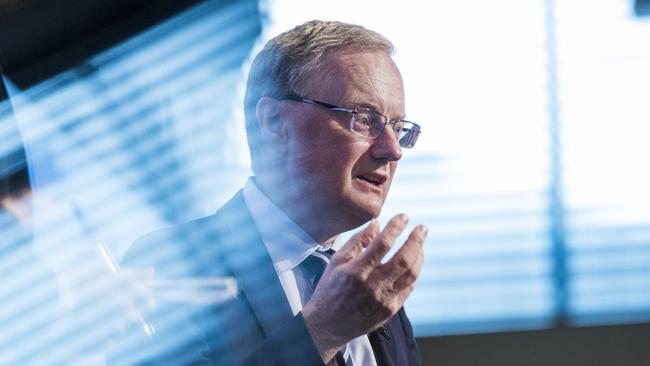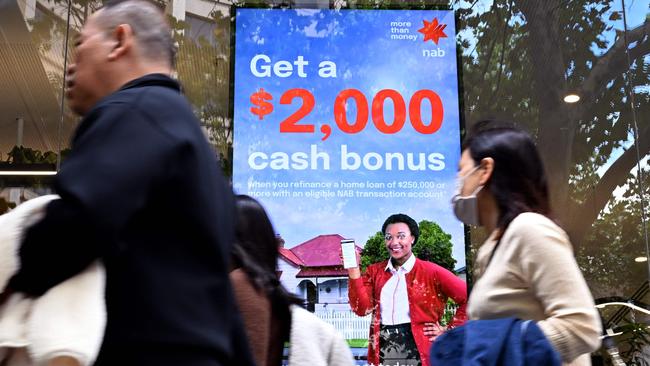Prospect of slowdown may soften RBA tough talk but rates hike still coming
Mortgage holders should expect another rate rise on Tuesday, but RBA governor Philip Lowe may soften his language about the need for further hikes amid growing evidence of a slowdown.

Mortgage holders should expect a tenth straight rate rise on Tuesday, but economists say Reserve Bank governor Philip Lowe may soften his language about the need for multiple further hikes in the months ahead amid growing evidence of an economic slowdown.
Another 0.25 percentage point interest rate increase to 3.6 per cent would mean a household with a $500,000 mortgage would be paying an extra $77 a month servicing their debt, according to RateCity, bringing the total increase in their interest bill since the RBA started hiking in May to $980 a month, or $11,800 a year.
On a $750,000 mortgage, borrowers will be paying an extra $116 a month, or almost $1400 a year – a 42 per cent increase since April.
ANZ chief executive Shayne Elliott said while borrowers remained in “remarkably good shape”, that would start to change with further hikes.
“That suggests potentially the Reserve Bank has a lot more hard work to do. Because they obviously do want to have an impact and they do want to slow down people spending and that’s hard to see at any scale today,” he said. “It’s clearly going to be a lot more stressful (for borrowers) over the next six months than it has over the last.”

After hiking to 3.35 per cent last month, Dr Lowe used a red-hot December quarter consumer price index number to dial up his rhetoric about the dangers of accelerating inflation, even warning that a recession and unemployment of up to 9 per cent could be required to bring inflation back down if it got out of control.
Dr Lowe shocked the market in his February 7 meeting statement, saying “further increases in interest rates will be needed over the months ahead” – essentially locking in at least two more hikes, after in December having talked up the potential for a “pause”.
That more hawkish rhetoric may need to be dialled back in his statement on Tuesday, some economists believe, following a slew of recent economic indicators that suggest monetary policy tightening is already biting hard.
National accounts figures last week showed consumption growth slowed to a crawl in the final three months of 2022, despite a big lift in migration and sharp drop in the household savings rate to below average levels.
Real GDP lifted by 0.5 per cent in the quarter, but would have contracted were it not for booming mining and energy exports.
The national accounts also revealed that the central bank’s preferred broader measure of wages growth in 2022 was 2.5 per cent, the RBA said, and barely half the 4.7 per cent pace the central bank had anticipated.
Monthly inflation figures released the same day showed consumer price growth decelerated from 8.4 per cent in December to 7.4 per cent in January – a larger than expected fall that bolstered the case that inflation, while still too high, would fall sharply through this year.
Stagnant retail sales since September last year and a plunge in consumer confidence were further signs that the most aggressive rate hike cycle for a generation was having an impact.
AMP Capital chief economist Shane Oliver said it appeared the RBA had overreacted to the stronger than expected December quarter inflation figures, even as he scotched any talk of no movement on Tuesday.
“Yes they will go ahead with a rate hike this week – it would damage their credibility if they didn’t, given the hawkish commentary from the last meeting,” Dr Oliver said. “But to ignore the recent soft run of data would be rather dangerous. It’s quite likely that the slowdown that would have otherwise occurred last year was masked by the post-lockdown reopening boost, and now looks like that has largely run its course,” he said. “The RBA will have to acknowledge the soft data, but say we need another month to see what the jobs and retail sales figures look like,” he said.
He expects rates to hit 3.85 per cent next month before a pause.








To join the conversation, please log in. Don't have an account? Register
Join the conversation, you are commenting as Logout